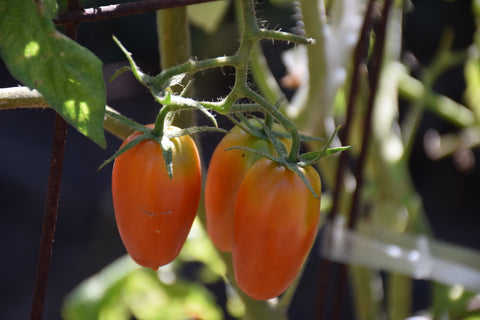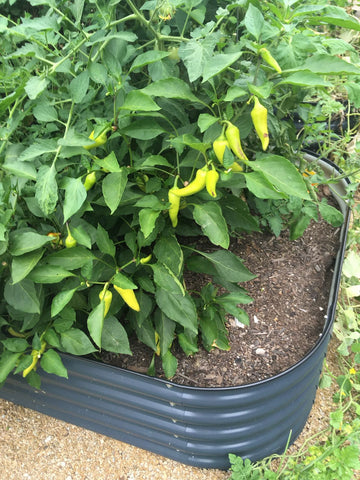Tips From Olle Garden Bed For Designing Your Own Garden
With the current environmental situation, it seems that there is often something we can hardly improve. However, no matter how insignificant the drop of inspiration seems to be in the ocean of infinite possibilities, the sea is a collection of millions of small droplets, each of which is connected to form a tight, unified body. In this way, every choice we make is very important, so even a small thing, because what we eat can have a huge impact in a grand plan. The following content also has some reference value for raised garden beds.

It goes without saying that buying food locally is one of the most important steps to live a sustainable life. But if we tell you, can you take it further? Growing your own vegetables seems daunting at first, but it's actually easy to achieve. It can also benefit your environment in many different ways.
However, before you start eating your own vegetables, you need to grow them. Although you can definitely plant some smaller herbs on the kitchen counter, if you want to grow vegetables in a sustainable way, you need a home garden. Don't know where to start? That is what we are here for.
Choose the right point before you start any work, you need to find the right place for your garden. This may seem obvious at first glance, but you need to think more about finding a vegetable garden that meets the requirements of everyone on your plot.
First, consider the fact that your plant needs to be evenly based. To ensure that your vegetable planting is the easiest, you need your garden to be completely flat. Of course, slight slopes are not entirely impossible, especially if they are located to provide more sunlight, but you may need to use some tools to make it even if the ground is too uneven.
Once you have found a place for your garden, it is time to dig deep and find out what you have dealt with. The key to finding out at this stage is that your soil is more acidic or alkaline. Needless to say, this step is important because it determines what you can do with the garden, mainly by determining the type of mulch and compost you will use.
Keep in mind that this will also determine which plants are easier to grow and which require more attention. Neutral pH is ideal because most plants can thrive in this environment, although some plants will like acidic soil but not alkaline, and vice versa. If you decide to continue growing this vegetable instead of buying it, you should adjust your mulch accordingly. Of course, in any case, make sure your mulch is completely organic -- but I'll talk more about it later.
To the core of the problem, we have discussed a lot about how plant selection will determine how you deal with the problem coverage. Now that you know where you stand, it's time to decide what you will plant in the garden. Maybe you are imagining fresh cucumbers, tomatoes or sweet peppers in the morning - you can definitely let them grow outside the kitchen, making it easier to get all these windows. To be honest, this is the best and most attractive part of your vegetable garden.
However, sustainable development is not just about environmental protection. You should also consider your financial situation and whether planting vegetables is more profitable for you than simply buying at the local farmers' market. Some products are more scarce or expensive when purchased in stores. If so, go! However, keep in mind that these things may change with seasons and years, so pay close attention to how profitable gardens are for you and make sure to adjust accordingly.

Good company did. Do you know that basil and tomatoes can actually improve the taste of tomatoes. Tomatoes also play a role as natural insect repellents? Or is broccoli the perfect companion for lettuce because it grows faster and taller, and protecting it from the sun does not require a lot of lettuce? This relationship between vegetables is what we call companion plants. You should be careful when deciding which seeds to go to, because it can greatly improve the output of your garden in an organic way. Say that in companion plants, don't limit yourself to vegetables. Eating flowers will add incredible color to your meals and garden. There are many choices, and plants like sweet madder or yarrow are especially beneficial because they will attract bees and other good insects to your garden. The same is true of some very popular herbs, such as rosemary or lavender. Let's not forget that these gardens will look more lovely to add.
Help your plants grow – about compost and mulch
You can save a lot of money and resources by using your own garden coverings. No chemicals are needed - they consume your wallet and your threat to the environment. By using organic compost and mulch, you know exactly what is happening there, and adjust the pH of the soil accordingly to improve the growth of the plants you want.
When you keep your garden running, you will soon find that you will eventually get a lot of dead substances that are very suitable for composting. In a truly sustainable vegetable garden, nothing is really wasted - it all depends on how you use the resources at hand.
Consider the existence of a seed bank
Preparation is an integral part of running a sustainable garden. You never know when more severe winter comes or violent thunderstorms will destroy your plants. In order to prepare these instances, it is better to build your own instance seed library. Collect plant seeds and store them in a safe place so that whatever happens, you can easily rebuild. In addition, if you know that your products are very good and want to share them with your friends, you can give them means to plant some by themselves to help them seize the opportunity to own the vegetable garden.
